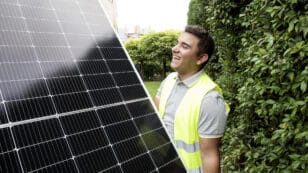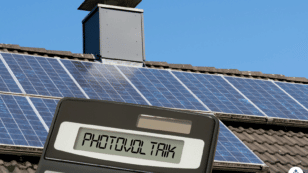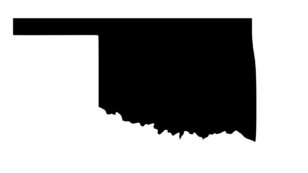
Is Solar Worth It in Oklahoma? (2024 Homeowner's Guide)
Here’s a quick overview of solar viability in Oklahoma:
- Oklahoma ranks 45th in the country for solar installations.*
- The average electricity rate is 12.46 cents per kilowatt-hour.**
- The average solar payback period is 14 years.***
- Homeowners are eligible for net metering and the federal solar investment tax credit (ITC).
- The average homeowner saves $22,648 over the lifetime of their solar system.***
*According to the Solar Energy Industries Association.1
**Data from the Energy Information Administration.2
***Calculated assuming the system is purchased in cash.
Each product and or company featured here has been independently selected by the writer. You can learn more about our review methodology here. If you make a purchase using the links included, we may earn commission.
Oklahoma residents enjoy energy rates that are well below the national average and have minimal solar incentives available to them. As such, many homeowners in the Sooner State wonder if investing in a solar panel system is worth it. In general, solar is a good option in OK that will save homeowners money, but it’s not suitable for everyone.
In this article, you’ll learn about the metrics you can use to determine if solar panels are right for your home. You’ll also read about the benefits solar panels can bring you in Oklahoma and some considerations you should make before converting to this clean energy source.
To speak with an EcoWatch-vetted professional who can help you determine whether solar is worth it for your Oklahoma home, follow the links below.

Shine Solar, LLC

Regional Service
Average cost
Pros
- Many financing options
- Great warranty coverage
- Offers a panel buy-back option
- Outstanding workmanship
Cons
- Relatively young company
- Limited brands of solar equipment available

Astrawatt Solar
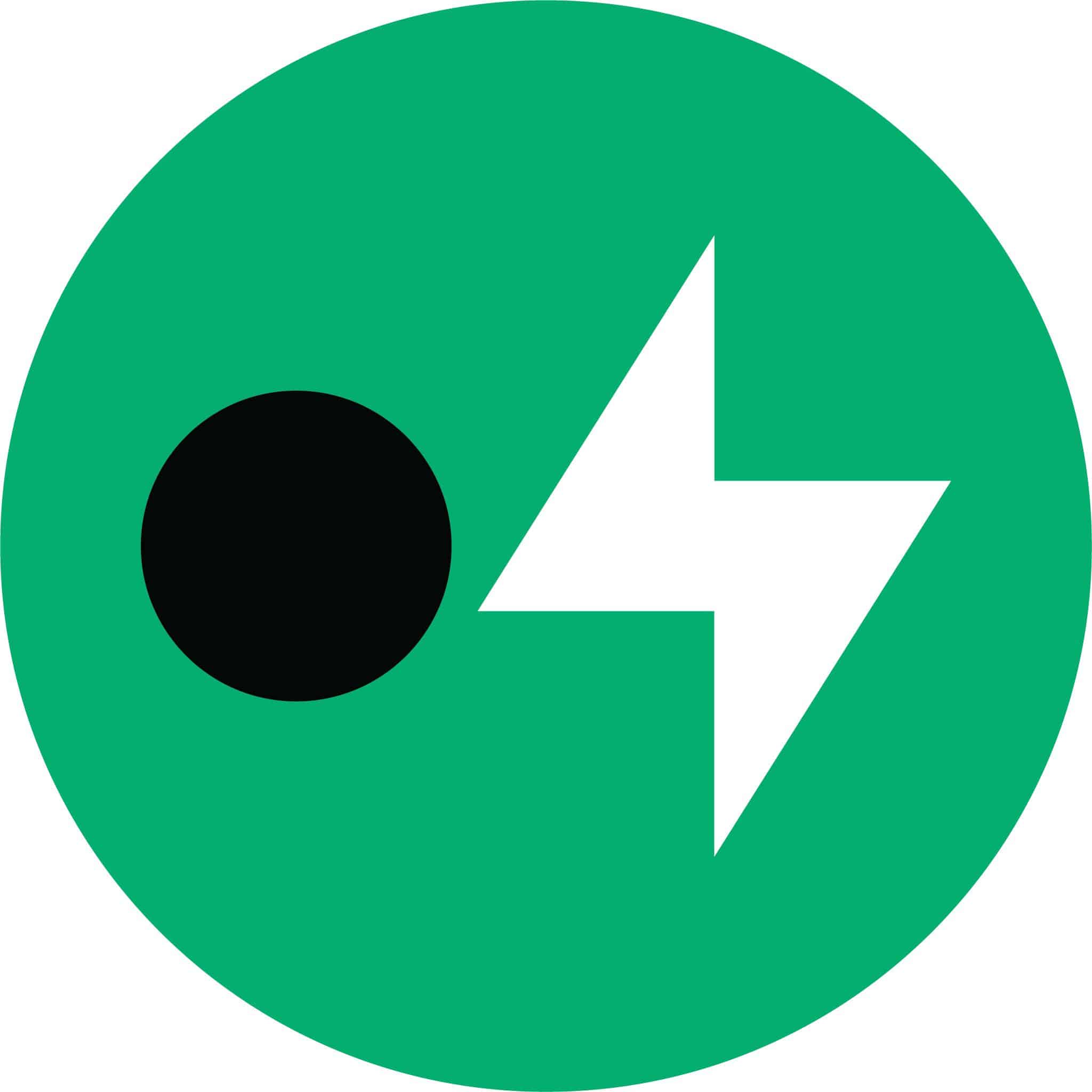
Average cost
Pros
- Comprehensive service offerings
- Excellent reputation
- Award-winning company
- Educational, no-pressure sales approach
Cons
- Limited service area
- Relatively young company
Watch Below: Is Solar Actually Worth it In Oklahoma?
How to Figure Out if Solar Panels are Worth It in Oklahoma
The average homeowner in Oklahoma stands to save over $22,500 by converting to solar after the system pays for itself, but these savings aren’t guaranteed for all residents. Below are some factors to consider to determine if solar is a good fit for your property.
What’s Your Home Electricity Consumption?
One of the easiest ways to determine if solar will benefit you is to look at your monthly energy consumption, which you can typically find on your past energy bills. Most of the savings from going solar will appear on your electric bills, so if you don’t consume enough power to make the investment worthwhile, you could end up needlessly spending money and not saving any long-term.
The usual benchmark for solar viability is a monthly consumption of at least 500 kilowatt-hours per month. The more you consume above this threshold, the more your panels will save you over time. Most Oklahomans use around 1,078 kWh every month, which is well in excess of the cutoff for solar viability and the national average. From an energy consumption standpoint, Oklahoma is a great place to convert to solar energy.
How Much Is It To Go Solar in Oklahoma?
The price of solar panels in Oklahoma varies wildly based on the solar energy system size you need, but the average per-watt price consistently averages around $3.34, just under the national average of $3.34. Most residents need an 11-kW system, bringing the average total to $25,718 after the federal tax incentive is considered. Your money will go a bit further in Oklahoma than in most other states when it comes to solar, thanks to the below-average price of solar equipment in the area.
Solar panels are more valuable in areas where electricity rates or usage is high. The price of electricity in OK is below average, but the above-average energy consumption means solar will both be more affordable than in most states and will end up saving you more than in the rest of the country.
What’s the Payback Period for Solar in Oklahoma?
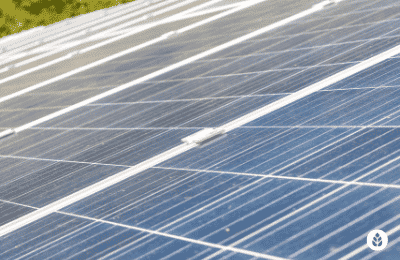
The average payback period in Oklahoma is 14 years, which is longer than the 12-year average in the rest of the country. Based on this metric alone, solar is less valuable in OK than in most other states. A typical range for this payback period in the area is 13 to 19 years. You’ll save money provided yours is below 25 years, but longer payback periods will yield lower returns on investment overall.
What Are Average Buy-Back Rates in Oklahoma?
Net metering is a solar incentive offered in most states that massively benefits solar customers. The program lets you sell back any excess energy produced by your system for a credit to your electric bills. Net metering helps you offset your electric bills, reduce your payback period and increase your ROI.
While the State of Oklahoma does mandate net metering, it doesn’t require utility companies to buy back your energy at the retail rate. As such, most electric companies use an avoided-cost rate, which is similar to the wholesale value. This is less beneficial for solar customers, and those looking to eliminate their power bills and maximize savings will likely have to install a solar battery as a part of their solar project. Solar batteries will help you store your excess energy and use it to offset electricity at the retail rate.
How Much Sun Does Your Roof Receive?
Solar panels are only as valuable as the sunlight they receive, which means homes that get hit with more sunlight will be better suited for solar panel installation. Oklahoma receives an average of 234 sunny days per year, which is well above the national average of 205 days. The lack of cloudy weather generally makes OK a better place than most for solar panels.
However, not all homes in the Sooner State will benefit equally, as there are some individual factors that can make your property less suitable for solar. The orientation of your roof with respect to the sun’s path in the sky will affect how much you stand to save. South-facing roofs are the best in the US, and west-facing roofs can also be suitable. You will also need to assess shading on your roof from trees or buildings. The more shade your roof receives, the less valuable solar panels will be.
What’s the Outlook on Solar in Oklahoma?
Oklahoma ranks close to the bottom in terms of solar prevalence. This is due in large part to the popularity of wind power. Oklahoma ranks third in the country for wind power generation and 45th in the state for solar power installations. While renewable energy is widely accepted in the area, much more focus is placed on promoting wind energy. As such, there are few incentives for installing solar in OK, as wind helps the state reach its Renewable Portfolio Standard (RPS) goals.
With that being said, home solar installations have increased immensely in popularity over the past decade, with 2021 being the best year by far for solar adoption. The likelihood is that the solar market will continue to increase and improve in the near future, but wind power might always take precedence.
Benefits of Solar Energy in Oklahoma
Installing solar panels in Oklahoma provides homeowners with numerous benefits, including financial incentives and positive environmental changes. We’ll discuss the most impactful upsides of going solar in Oklahoma below.
Electricity Bill Savings
Most prospective solar customers know that the most significant financial incentive of converting to solar power will be the savings they enjoy on their energy bills. Solar panels produce electricity for your home, so every kilowatt-hour your panels generate will be another that you don’t have to pay your utility company for. On average, Oklahomans could save around $134.32 per month, but this means eliminating energy bills, which typically requires a solar battery.
If you do install panels and a storage system, you effectively lock in a lower electricity rate for the 25+ years your photovoltaic equipment is expected to last. This means you will pay off your solar PV system in around 16 years, and the remaining 9+ years of system lifespan will provide an additional $22,648 in energy savings.
Lower Taxes & Access to Other Incentives
Oklahoma isn’t the most solar-friendly state because it focuses more of its efforts on wind power as the primary renewable energy source. However, there are some Oklahoma solar incentives offered for converting to solar energy. The most beneficial incentive comes from the federal government in the form of the federal solar tax credit (ITC). The ITC provides a credit to your federal income taxes for 30% of your total installation expense, which averages around $11,022 in Oklahoma.
Oklahomans also have access to the mandated net metering policy, which helps pay back the system more quickly using energy savings and bumps up your ROI over time.
Home Resale Value Increase
Solar panels make your home more valuable, and this value bump is one of the most appealing benefits of going solar for many residents. Research completed by Zillow suggests that the average home will experience a 4.1% value increase from the installation of solar panels.3 In Oklahoma, where home prices average around $196,774, most homeowners will see an increase around $8,067.4
This value increase is only expected if you purchase your panels with cash or a solar loan. Solar leases and power purchase agreements can have a negative effect on home value, as the new owner will have to take on the lease, or you’ll have to pay to cancel it early.
Clean, Renewable Energy
Since renewable energy is so popular in Oklahoma, some homeowners will be more concerned with their solar conversion’s impact on the environment than they are with the money it will save them. Installing solar panels means you’ll be less reliant on fossil fuels, which means you will reduce your emissions and carbon footprint and contribute less to pollution and climate change. Energy independence is also possible with solar in Oklahoma, although you’ll likely need a solar battery to achieve it.
What to Look Out For When Considering Solar in Oklahoma
Going solar isn’t necessarily a complicated process, but there are some things you should keep in mind even after you establish that solar panels are a good investment for your home. We’ll discuss some additional considerations you should make below.
Upfront Fees
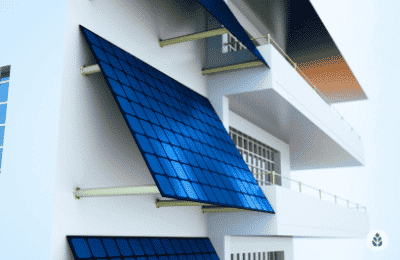
Payback Period
Your estimated solar panel payback period is a great way to determine your solar viability, and it can also help you estimate your return on investment down the road. Most Oklahomans will have a payback period of around 14 years or between 12 and 19 years. Anything up to 25 years will save you some money over time, but longer payback periods will mean your ROI will be lower and it will take you longer to recuperate your investment.
Net Metering Policies in Oklahoma
Net metering is a policy that helps homeowners offset their electric bills even further and increase their total return on investment. Oklahoma does mandate net metering programs, but the buy-back rate is set by individual electricity providers. Therefore, your net metering policy will vary depending on your utility company. The buy-back rate usually isn’t a make-or-break factor for solar, but a less favorable policy might mean paying more for a solar battery would be worth the investment.
Pending Policies & Changes to Incentives
The solar industry is constantly improving, and with that improvement and expansion can come changes to policies and incentives. This is especially true in areas like Oklahoma, where solar adoption has been relatively slow and has plenty of room to grow. It’s usually not worth it to wait for better incentives to come along, but you should check for new rebate programs and changes to existing incentives.
Weather & Climate in Oklahoma
Solar panels are generally most valuable in areas closer to the equator, where sunlight is most intense and abundant. As such, there are few states better for solar conversion than the Sooner State. Cloudy days will cause a massive reduction in energy production, and Oklahoma receives far more sunny days than the average in the US.
Some homeowners worry about the negative effects of tornadoes on solar panels, which is a valid concern. Oklahoma experiences more tornadoes than most areas throughout the entire world, so the majority of solar customers in OK will do well to hire a reputable solar installer that provides a robust warranty for physical damage.
Companies Pushing Solar Leases or PPAs
Finally, the solar panel installer you choose is an important thing to consider, as not every solar company is created equal. It’s wise to avoid the solar companies in Oklahoma that advertise “free solar panels.” While these deals seem appealing, they’re usually just schemes to get you to sign a solar lease. Solar leases aren’t recommended, as they provide far fewer savings on average, they don’t improve your home value and they don’t let you take advantage of the federal tax credit.
Unfortunately, as the popularity of solar panels in Oklahoma rises, so too do reports of illegitimate solar installers causing homeowners to lose thousands of dollars. Oklahoma’s News 4 has reported on solar scams that leave homeowners with non-functioning panels and mounds of debt.5 There have also been reports in areas like Oklahoma City of solar companies that overpromise benefits and savings and never deliver on those promises.6 To avoid falling victim to a solar scam, it’s best only to work with a reputable, vetted solar company in your area.
Wrap Up: Is Solar Worth it in Oklahoma?
Most Oklahoma residents experience massive savings when going solar and a slew of benefits that makes converting a worthwhile investment. However, not every OK resident will see a return on investment from their solar panel system. It’s very important that you assess your home’s solar viability to ensure your investment won’t end up losing you money rather than providing savings.
Some important things to consider include the size and price of the system you need, your monthly energy consumption, the net metering policy offered by your electric company, shading on your roof and more. It’s a good idea to contact a reliable solar panel installation company to help you figure out if solar is a good option for your home.
See also: See how much you can save by going solar with the EcoWatch Solar Calculator
Read More About Going Solar
- What Are the Most Reliable Solar Companies in Oklahoma?
- What Incentives Are Available to Oklahoma Solar Customers?
- How Much Do Solar Panels Cost In Oklahoma?
The cost information presented in this article is derived from a comprehensive analysis, incorporating data from multiple industry sources. The average cost per watt per state was calculated based on figures from Consumer Affairs, Energy Sage, and Berkeley Lab’s Electricity Markets & Policy Department. Additionally, monthly energy consumption and the average monthly cost of electricity were sourced from the U.S. Energy Information Administration, ensuring a well-rounded and accurate representation of the information presented.
Frequently Asked Questions
We get tons of questions about the potential savings from going solar in Oklahoma. Below are some of the questions we see most often, which you might have as well.
If you have specific questions that aren’t answered here, reach out to our team of solar experts at solar@ecowatch.com.
Most home solar systems will pay for themselves in Oklahoma in around 14 years, but any time frame between 12 and 19 years is typical for the area. The longer your payback period is, the lower your return on investment will be.
Your payback timeline can vary quite a bit from the averages above, as there are many factors that affect how quickly you’ll recuperate your investment. Some of these factors include the size of the system you need, your total system expense, your home’s energy efficiency, the direction your roof faces, obstructions to sunlight hitting your roof and more. You can use a solar calculator to estimate your payback period or have a solar installer calculate it for you with a bit more accuracy.
Most Oklahoma residents will save a significant amount of money by installing solar panels. Going solar means you can offset your electric bills, and if you couple your panels with a solar battery, you could eliminate them altogether. With the average Oklahoman spending around $134.32 per month on electricity, the potential savings will total $22,648 over the system’s lifespan, and this is after the panels pay for themselves.
If you use a cash purchase or solar financing to acquire your panels, then the system is expected to increase your home value. Estimates from Zillow suggest that the typical home goes up in value by around 4.1% with the addition of a solar power system or an average of $8,067 in Oklahoma.
Solar leases and power purchase agreements (PPAs) are less appealing, in part, because they don’t provide the same value increase.
Yes, permits are required for solar panel installation in Oklahoma. Permits help your local municipality ensure that your home can structurally support the weight of the photovoltaic equipment and that connection to the electric grid is made safely. Most solar customers don’t have to pull permits themselves, as the solar panel installer typically handles the process.
You can install your own solar panels in Oklahoma, but it’s not usually a good idea. You will save a bit of money on labor, but you’ll also be putting yourself at risk, and any mistakes could leave your home or your panels exposed to severe damage. The risk is not worth the reward in most cases, so we recommend leaving the installation to the professionals.
Top Solar Installers in Oklahoma Cities
Comparing authorized solar partners
-
- Many financing options
- Great warranty coverage
- Offers a panel buy-back option
- Outstanding workmanship
- Relatively young company
- Limited brands of solar equipment available
A-Outstanding Regional Installer
Having trouble deciding? Click below and use our process to receive multiple quotes instead:

 233k
233k  41k
41k  Subscribe
Subscribe 


